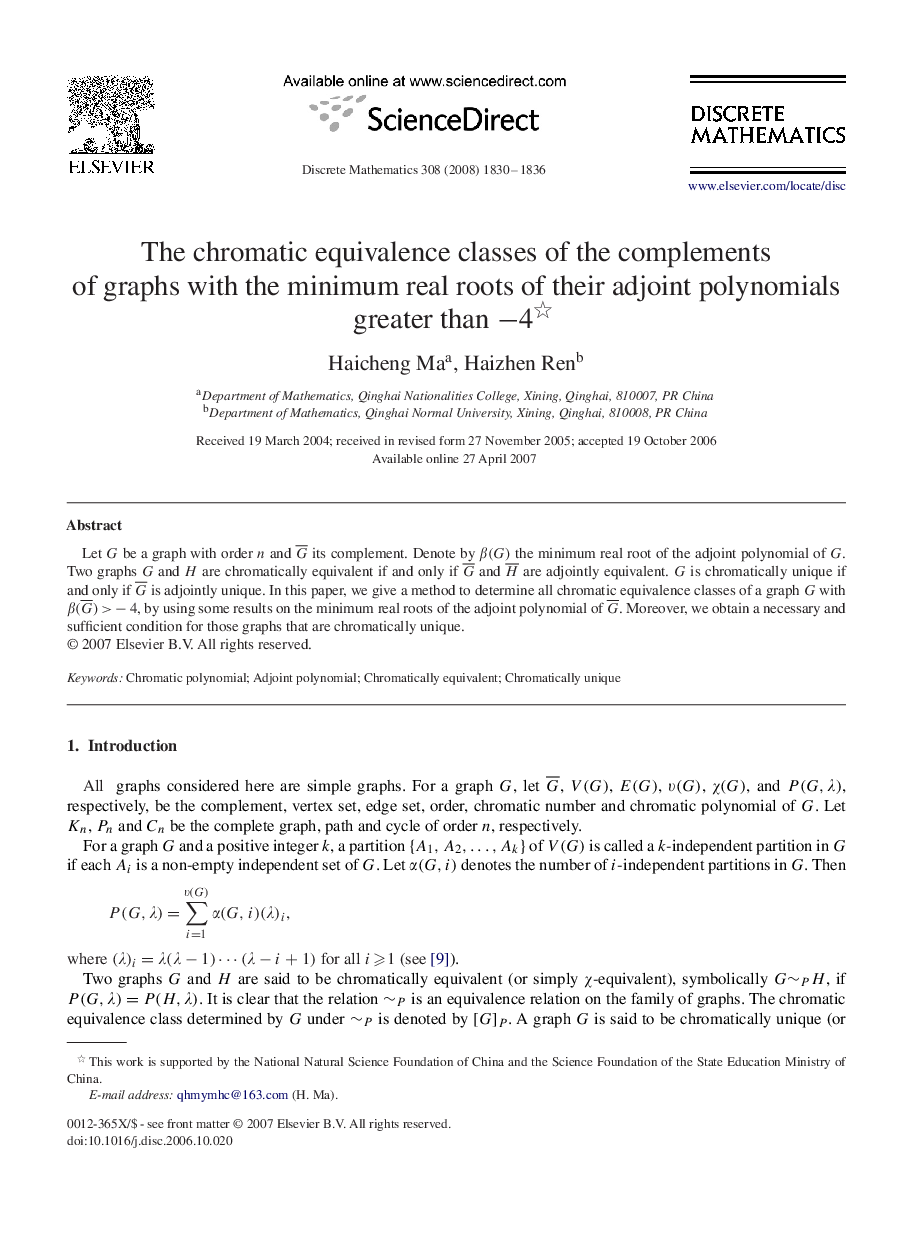| Article ID | Journal | Published Year | Pages | File Type |
|---|---|---|---|---|
| 4649691 | Discrete Mathematics | 2008 | 7 Pages |
Abstract
Let GG be a graph with order nn and G¯ its complement. Denote by β(G)β(G) the minimum real root of the adjoint polynomial of GG. Two graphs GG and HH are chromatically equivalent if and only if G¯ and H¯ are adjointly equivalent. GG is chromatically unique if and only if G¯ is adjointly unique. In this paper, we give a method to determine all chromatic equivalence classes of a graph GG with β(G¯)>-4, by using some results on the minimum real roots of the adjoint polynomial of G¯. Moreover, we obtain a necessary and sufficient condition for those graphs that are chromatically unique.
Related Topics
Physical Sciences and Engineering
Mathematics
Discrete Mathematics and Combinatorics
Authors
Haicheng Ma, Haizhen Ren,
